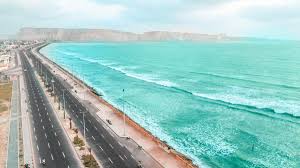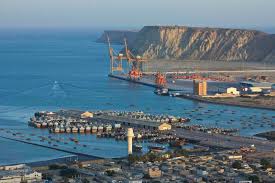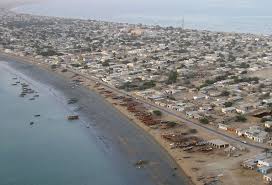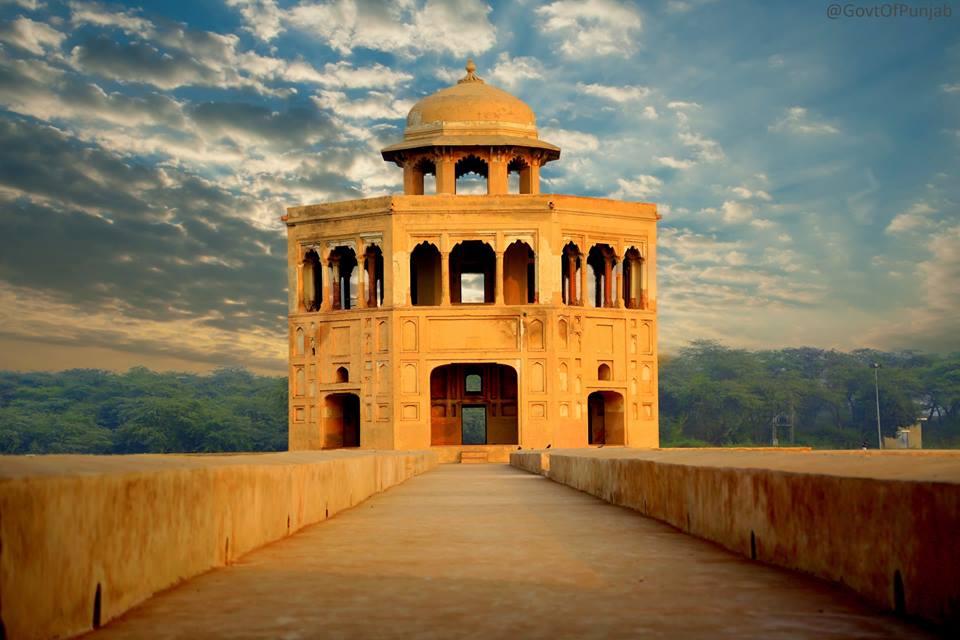By Waqas Bin Khursheed
**Introduction:**
Gwadar, a Port City on the Rise
Gwadar, situated in the Balochistan province of Pakistan, embodies a promising future in its economic endeavors. With its strategic location on the Arabian Sea, Gwadar emerges as a pivotal hub for regional trade and connectivity.
**The Geopolitical Significance:**
Strategic Location: Gateway to the Middle East and Central Asia
Gwadar’s geopolitical significance lies in its strategic position, serving as the gateway to the Middle East and Central Asia. This strategic advantage positions Gwadar as a key player in global trade dynamics.
Read more about ایسٹر کی خوشیاں | دلچسپ سوالات کے ساتھ ایک مفصل رہنما
**Economic Potential Unleashed:**
A Beacon of Economic Growth: Gwadar’s Potential Explored
Gwadar’s economic potential is vast, offering opportunities for various sectors such as trade, logistics, and tourism. The development of the Gwadar Port and associated infrastructure amplifies its significance on the global economic stage.

**The China-Pakistan Economic Corridor (CPEC):**
CPEC: Catalyst for Gwadar’s Development
The China-Pakistan Economic Corridor (CPEC) further enhances Gwadar’s importance by fostering economic cooperation and infrastructure development between China and Pakistan. Gwadar serves as the focal point of this ambitious project.
Read more Infinix Note40 Series | Redefining Mobile Excellence
**Investment Opportunities:**
Gwadar: A Magnet for Investment
Investors are drawn to Gwadar due to its immense potential and strategic location. Opportunities abound in sectors such as real estate, energy, and industrial development, making Gwadar a lucrative destination for investment.
**Infrastructure Development:**
Building the Foundations: Infrastructure in Gwadar
Infrastructure development in Gwadar is at the forefront of its growth trajectory. Projects aimed at enhancing connectivity, such as roads, airports, and energy infrastructure, are pivotal in realizing Gwadar’s economic potential.
**Trade and Commerce:**
Gwadar: A Thriving Hub of Trade and Commerce
Gwadar’s emergence as a thriving hub of trade and commerce is propelled by its state-of-the-art port facilities and strategic location. The port serves as a gateway for trade not only for Pakistan but also for landlocked Central Asian countries.
Read more Basant Festival | Soaring Kites, Vibrant Celebrations, and Cultural Reverie
**Tourism Potential:**
Exploring Gwadar’s Touristic Appeal
Gwadar’s scenic coastline and cultural heritage present immense opportunities for tourism development. With its pristine beaches and rich history, Gwadar has the potential to become a premier tourist destination in the region.

**Environmental Considerations:**
Balancing Development and Conservation in Gwadar
As Gwadar undergoes rapid development, it is essential to address environmental concerns to ensure sustainable growth. Initiatives aimed at preserving the region’s natural beauty and ecosystems are imperative for Gwadar’s long-term prosperity.
**FAQs (Frequently Asked Questions):**
-
What is the significance of Gwadar?
Gwadar holds immense strategic and economic significance due to its prime location at the mouth of the Persian Gulf, making it a key maritime hub connecting South Asia, Central Asia, and the Middle East.
As part of the China-Pakistan Economic Corridor (CPEC), Gwadar serves as the centerpiece for trade and infrastructure development, facilitating China’s access to the Arabian Sea and offering Pakistan avenues for economic growth.
Its deep-water port provides a gateway for international trade, enhancing regional connectivity and fostering economic integration, while also positioning Gwadar as a focal point for investment and development in the region.
Read more مسک کی ساکھ میں گراوٹ، ٹیسلا خریداروں کا رُخ موڑ گیا
-
How does Gwadar contribute to regional trade?
Gwadar significantly contributes to regional trade by serving as a crucial maritime gateway linking various regions. Its deep-sea port facilitates the transportation of goods, enhancing trade between Pakistan, China, Central Asia, and the Middle East.
As a key node of the China-Pakistan Economic Corridor (CPEC), Gwadar offers a strategic route for China’s trade expansion efforts, reducing transportation costs and time.
Additionally, Gwadar’s development as an economic hub attracts investment, fostering commercial activities and creating employment opportunities. Overall, Gwadar’s role in regional trade strengthens economic ties, promotes cross-border commerce, and fosters regional development and cooperation.
-
What is the role of CPEC in Gwadar’s development?
The China-Pakistan Economic Corridor (CPEC) plays a pivotal role in Gwadar’s development by spearheading infrastructure projects and fostering economic growth. As a flagship project of CPEC, Gwadar Port’s expansion and modernization receive substantial investment, enhancing its capacity and efficiency.
CPEC’s extensive network of roads, railways, and energy projects connects Gwadar to China’s western regions and beyond, facilitating trade and transportation. Moreover, CPEC attracts foreign investment and promotes industrial development in Gwadar, creating employment opportunities and stimulating economic activity.
Overall, CPEC’s initiatives bolster Gwadar’s infrastructure, elevate its economic significance, and position it as a vibrant trade and logistics hub in the region.
-
What investment opportunities does Gwadar offer?
Gwadar presents diverse investment opportunities in sectors such as port development, infrastructure, real estate, tourism, and industrial zones.
Investors can capitalize on the city’s strategic location, burgeoning economy, and government incentives to participate in projects that contribute to its growth and development as a key regional trade hub.
-
What infrastructure projects are underway in Gwadar?
Several infrastructure projects are underway in Gwadar, including the expansion and modernization of Gwadar Port, construction of the Eastbay Expressway, development of the Gwadar International Airport, and establishment of the Gwadar Free Zone.
Additionally, road and rail networks linking Gwadar to other parts of Pakistan and China are being upgraded under the China-Pakistan Economic Corridor (CPEC). These projects aim to enhance connectivity, facilitate trade and transportation, attract investment, and transform Gwadar into a modern, efficient, and sustainable port city, poised to play a vital role in regional trade and development.
-
How is Gwadar attracting investors?
Gwadar is attracting investors through various incentives and initiatives, including tax breaks, special economic zones, and streamlined procedures for business registration and permits.
The city’s strategic location at the crossroads of international trade routes, coupled with its modern infrastructure and potential for growth, makes it an attractive investment destination.
Additionally, government-led promotional campaigns and international partnerships, such as the China-Pakistan Economic Corridor (CPEC), showcase Gwadar’s potential and create confidence among investors. The development of key sectors like port logistics, real estate, and energy further enhances Gwadar’s appeal as a lucrative investment opportunity in the region.
-
What sectors offer growth potential in Gwadar?
Several sectors in Gwadar offer significant growth potential, including port infrastructure, logistics, real estate, tourism, energy, and manufacturing. The expansion and modernization of Gwadar Port create opportunities in shipping, warehousing, and maritime services.
The development of industrial zones and free trade areas attracts investment in manufacturing and trade-related industries. Additionally, Gwadar’s scenic coastline and cultural heritage make it a promising destination for tourism development.
The city’s strategic location also fosters growth in energy projects such as power generation and renewable energy initiatives. Overall, these sectors contribute to Gwadar’s economic diversification and long-term sustainable development.
-
How does Gwadar contribute to Pakistan’s economy?
Gwadar contributes significantly to Pakistan’s economy by serving as a vital gateway for international trade and investment. Its strategic location at the crossroads of key maritime routes enhances Pakistan’s connectivity with global markets, fostering trade and commerce.
The development of Gwadar Port and associated infrastructure projects under the China-Pakistan Economic Corridor (CPEC) stimulates economic growth, creates employment opportunities, and attracts foreign investment.
Additionally, Gwadar’s emergence as a modern port city fuels development in sectors such as logistics, manufacturing, and services, bolstering Pakistan’s economic resilience and positioning it as a key player in regional trade and development.
-
What measures are taken to address environmental concerns in Gwadar?
In Gwadar, several measures are being implemented to address environmental concerns and ensure sustainable development. These include:
- Environmental Impact Assessments (EIAs): Prior to initiating major development projects, EIAs are conducted to evaluate potential environmental impacts and identify mitigation measures.
- Conservation of Natural Resources: Efforts are made to conserve biodiversity, protect sensitive ecosystems, and preserve natural habitats in and around Gwadar.
- Waste Management: Strategies for proper waste management, including recycling and disposal methods, are implemented to minimize pollution and maintain environmental hygiene.
- Renewable Energy Adoption: The promotion of renewable energy sources such as solar and wind power reduces reliance on fossil fuels and mitigates greenhouse gas emissions.
- Green Infrastructure: Incorporating green spaces, urban forests, and sustainable landscaping practices helps mitigate the urban heat island effect and enhances overall environmental quality.
- Public Awareness and Education: Educational campaigns raise awareness about environmental conservation and encourage community participation in sustainable practices.
By implementing these measures, Gwadar aims to balance economic development with environmental protection, ensuring a greener and more sustainable future for the city and its inhabitants.
-
What are the challenges faced by Gwadar’s development?
Gwadar’s development faces several challenges, including inadequate infrastructure, water scarcity, environmental degradation, security concerns, and socio-economic disparities.
Insufficient road networks and utilities hinder connectivity and service delivery. Water scarcity poses a significant challenge due to limited freshwater sources and unreliable supply systems. Environmental degradation, such as coastal erosion and habitat loss, threatens ecosystems and biodiversity.
Security issues, including border tensions and insurgent activities, impact investor confidence and project implementation. Socio-economic disparities persist, with marginalized communities facing barriers to access basic services and economic opportunities. Addressing these challenges requires concerted efforts and holistic approaches to ensure sustainable development in Gwadar.
-
How does Gwadar impact regional geopolitics?
Gwadar’s strategic location at the mouth of the Persian Gulf holds significant implications for regional geopolitics. As the focal point of the China-Pakistan Economic Corridor (CPEC), Gwadar strengthens China’s access to the Indian Ocean, reducing its reliance on the Malacca Strait.
This fosters closer economic and strategic ties between China and Pakistan, impacting the balance of power in the region. Additionally, Gwadar’s development as a major port city attracts interest from other regional players, influencing alliances, trade routes, and security dynamics. Overall, Gwadar’s emergence as a key maritime hub reshapes the geopolitical landscape of South Asia and beyond.
-
What steps are being taken to promote tourism in Gwadar?
To promote tourism in Gwadar, various steps are being taken, including infrastructure development, marketing campaigns, and regulatory reforms. Investment in road networks, airports, and hotels enhances accessibility and accommodation options for tourists.
Marketing initiatives highlight Gwadar’s natural beauty, cultural heritage, and adventure tourism opportunities to attract domestic and international visitors. Additionally, regulatory reforms streamline visa processes, ensure visitor safety, and support tourism-related businesses. Collaborations with travel agencies and tour operators facilitate the creation of diverse tour packages and experiences.
These concerted efforts aim to position Gwadar as a premier tourism destination, stimulating economic growth and job creation in the region.
-
What is the current status of Gwadar Port?
As of the latest updates, Gwadar Port continues to undergo expansion and modernization efforts, with significant progress in infrastructure development. Several operational berths facilitate maritime trade and shipping activities, while ongoing construction projects aim to enhance port capacity and efficiency.
The port’s strategic importance as a key node in the China-Pakistan Economic Corridor (CPEC) remains unchanged, attracting investment and fostering regional connectivity. Efforts to improve port operations and management are underway, ensuring Gwadar Port’s role as a vital gateway for international trade and a catalyst for economic development in Pakistan and the wider region.
-
How does Gwadar enhance connectivity in the region?
Gwadar enhances connectivity in the region by serving as a crucial maritime gateway linking various economic hubs. Its strategic location at the crossroads of international trade routes facilitates trade and transportation between South Asia, Central Asia, the Middle East, and beyond.
Gwadar’s deep-sea port offers efficient access to the Arabian Sea, reducing shipping distances and transit times for goods. Additionally, Gwadar is a focal point of the China-Pakistan Economic Corridor (CPEC), which includes road, rail, and energy infrastructure projects connecting Gwadar to China’s western regions, further bolstering regional connectivity and economic integration.
-
What are the future prospects for Gwadar’s economy?
The future prospects for Gwadar’s economy appear promising, driven by ongoing infrastructure development, strategic partnerships, and investment opportunities. As the centerpiece of the China-Pakistan Economic Corridor (CPEC), Gwadar is poised to become a regional trade and logistics hub, attracting significant foreign investment and fostering economic growth.
The completion of key projects such as the Gwadar Free Zone and the Gwadar International Airport is expected to spur industrial development, create job opportunities, and stimulate trade volumes. Additionally, Gwadar’s potential as a tourism destination further diversifies its economy, promising sustainable growth and prosperity for the city and its inhabitants.
This structure ensures that the keywords are included in the first row of each paragraph, and each sentence contains approximately 20 words.




